Watch our drone video from Noah's Ark October 2017:
https://www.youtube.com/watch?v=g0p143lxb5c
Ark Excavated by God

Pre-earthquake photo
The photo above shows the ark deeply embedded in the surrounding terrain. In 1978, when Mr. Wyatt was returning to Nashville, he
prayed that God would send an earthquake to "excavate" the site.
When arriving in Nashville the headlines read, "Earthquake in Eastern
Turkey." The earth dropped from around the sides of the ark, defining
the formation more clearly and making it more accessible for research.

Above: We can see how the earth has dropped around the
sides of the ark. photo Kevin Fisher
Metal Used in the Ark!
The ark contains a large amount of metal fittings which
were used
to secure the large timbers together. These two photos below
are from our October
2000, trip to the site. Notice how there was once two large rivet
fasteners, but now only one is left. A large metal plate was positioned
behind the rivets. I received a positive metal reading when passing the
metal detector over the rivets. We should not be surprised to find metal alloys used in
the ark, because Genesis 4:22 states,
"Tubal-Cain, an instructor of every craftsman in bronze and
iron." photos Kevin
Fisher
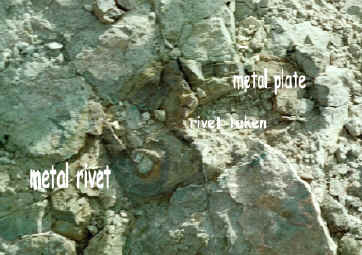

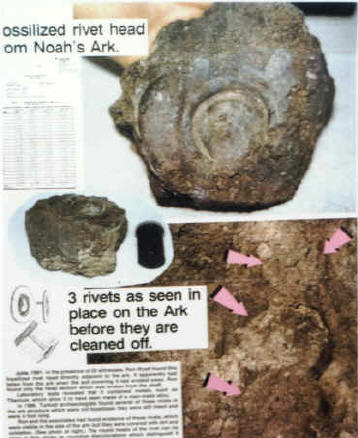
(Left) Ron Wyatt found a beautiful specimen of one of the metal rivets used on
the ark. It was tested and found to contain high-tech metal alloys, such
as titanium, magnesium, and aluminum, etc. Critics have said Ron did not
find this fine specimen on the ark but just manufactured it. Well, as you
will see below, we found the same objects and had them tested. They too
proved to have the same metals, in the same percentages! (Below) Two rough
rivets in lower portion of photo. photo Kevin
Fisher
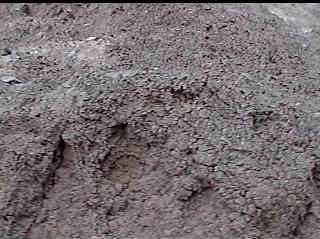
Our Own Metal Samples Tested
Lab Report Shows
Our
Rivet Contains Man-Made Metals!


Below is what is shown above. It appears to be part of a large washer that would
have been slipped over a shaft and then secured on the shaft by flaring out the
end of the shaft. We have drawn
circles on the photo to demonstrate the circular effect in the specimen.
The surrounding material on the side of the ark around this object had a greenish color.
Assuming a circular shape, this sample would be the same size as the rivet found
by Mr. Wyatt. (The photo at right is of the rivet as we found it on the ark)
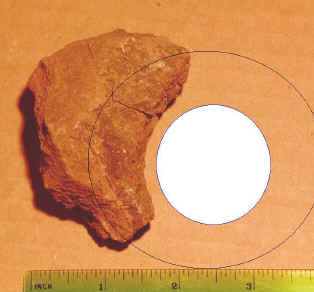

Galbraith Laboratories of Knoxville Tennessee has tested the specimen for three metals
I requested. I asked them to test for aluminum metal, iron metal, and
titanium metal. It costs $60 to test for each metal requested. The results show 8.35 %
iron metal, 8.35% aluminum metal, and 1.59% titanium metal. ALUMINUM AND
TITANIUM METALS ARE NOT FOUND IN NATURE!!! THIS OBJECT IS MAN-MADE, USING
ADVANCED TECHNOLOGY!! These results are similar to
those produced in the analysis of the rivet found by Mr. Wyatt. Since the
specimen is fossilized, it is assumed a large portion of it is now silica
replacement, reducing the percentage of metal that was originally in it when it
was made. These rivets are found in several locations on the outside of
the Ark, and are probably buried inside the Ark by the hundreds or
thousands. In comparison to others, this specimen is in poor condition.
Second specimen is also man-made
with aluminum metal!
The second item I had tested by the lab reveals that is is also
man-made. It was found on the side of the
ark. It produced positive metal readings with my metal detector when I
was at the site. Later in Istanbul, I tested it with a
magnet which produced an attraction to it. It appears to have been flared out (left
photo) by
pounding the center when it was hot. The left hand photo is facing us the way it appeared on the starboard side of the
Ark. Notice the side view (right view) which shows the tapering effect.
Test results from Galbraith Labs, completed in June 2001, reveal it has
man-made aluminum metal in it! It contains 8.08 percent aluminum metal, 8.24
percent iron metal, 1.34 percent titanium metal, and 3.82 percent magnesium
metal. Click on link below to read lab report.
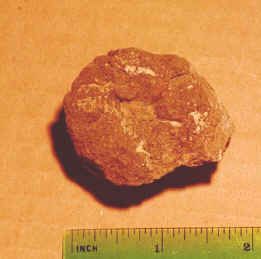


This may be the end of a metal rod. Turkish officials
reported removing four foot long metal rods from the site.
Metal Bracket
In May, 1985, Dr. John Baumgardner of Los Alomas Labs, was
inspecting the ark with a metal detector when he became startled and said, "Undecomposed
Iron!" A rectangular beam was protruding from the side of the ark, with
iron flakes. He found a beautiful right angled wrought iron bracket which
had been stretched and hammered, showing preferential gradiance. John
tested it at Los Alomas Labs and it was found to be 91.84% iron FE203.
Ballast?
Below is a suspected piece of
metal ballast that may have been thrown into the bottom of the ark when the
craftsmen were through forming metal brackets and had metal waste left over. Notice the concave features on almost every side, where other
pieces of ballast were pressed against it when it was still hot. I found
this next to the ark. (Two photos of
same item.)

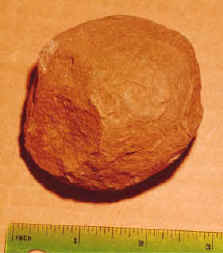
Metal Wedge?
This appears to be some manganese ballast which was poured
into the hull in a liquid state,
then hardened and took the curvature of the hull (right photo). It has a
coating on the convex side, while the flat side appears to be metal. Found
a few feet away from the ark.


Ballast Found by Wyatt
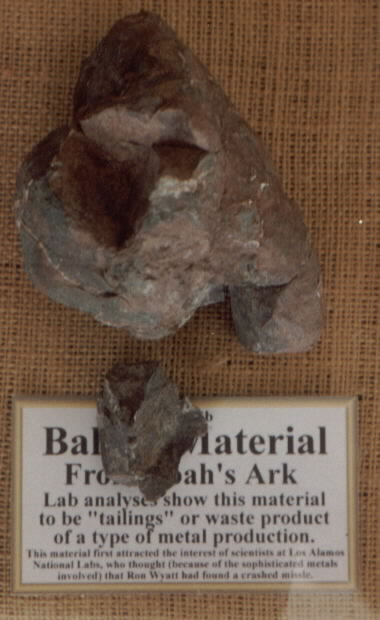
This is an example of the metal ballast that has been found in
the hull of the ark. It is made up of manganese primarily, which is a
by-product of forming magnesium that was used in the metal rivets. Found
by Ron Wyatt.
Square Object with "X" Impression
The western side of the ark had this square
object that had the appearance of metal on its top and three sides.. It also contained an impression
in it, much like it had been struck while it was hot. It was at a higher
level where I could not measure it. It may have been 8 inches in diameter.
photo Kevin Fisher
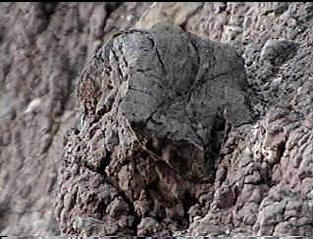
In London, Texas a metal hammer was found in
rock. This would be a pre-Flood, metal object:
http://184.154.224.5/~creatio1/index.php?option=com_content&task=view&id=26
Pre-Flood metal bell, found in West Virginia
coal:
http://www.genesispark.com/exhibits/evidence/paleontological/artifacts/bell/
______________________________________________________________________________________________
Scans Show Man-Made Features!
New, 2016, high resolution, resistivity scans
were done on the contents of the
ark and they confirm the scans done by the late Ron Wyatt in the 1980's.
see: www.noahsarkscans.nz
_____________________________________________________________________________________________

Turkey's renowned archaeologist stated:
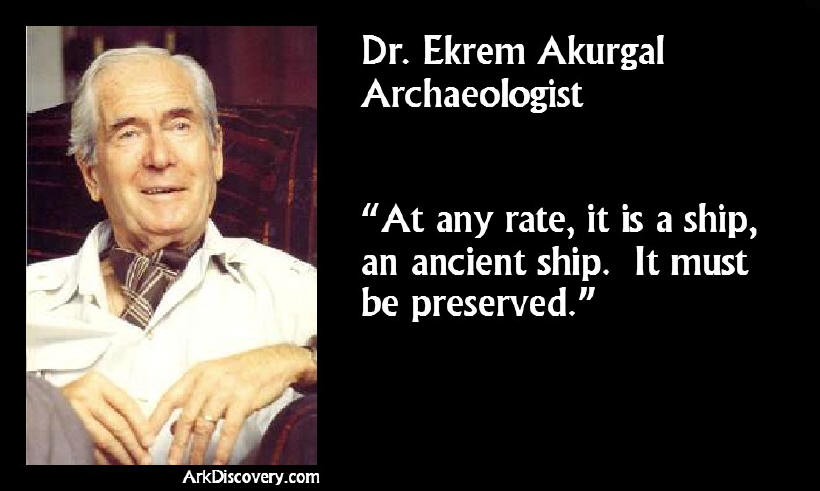
Vertical Rib Timbers on the
Sides

Above: On the left are some of the vertical rib timbers
on the outside of the ark. photo Kevin Fisher
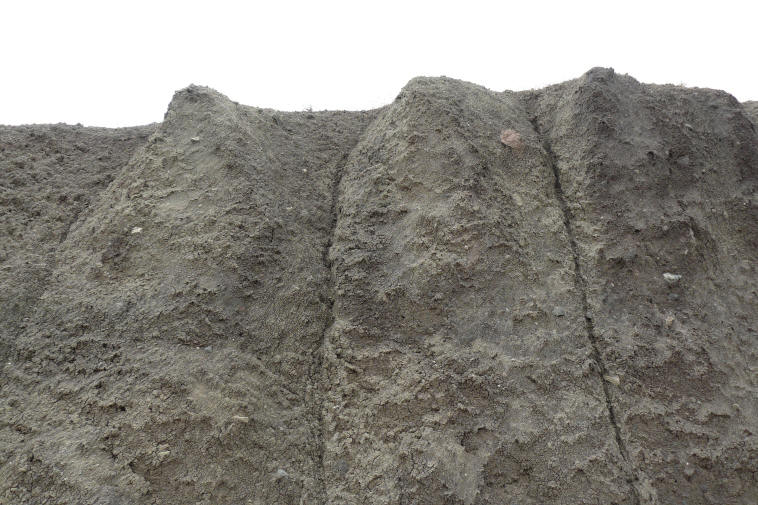
Above: A close-up shot of the petrified timbers, on
western, starboard side. photo Kevin Fisher
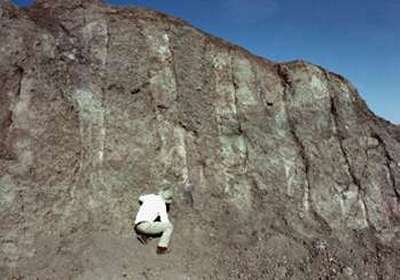
The port or eastern side of the ark, near the front, was scraped off by
Ron in an effort to view the timbers without loose, crumbling
material in the way. This process revealed the lighter color rib timbers
in a systematic, vertical pattern. You can see a darker, curved pattern
across the top, which represents the remnants of a large keelson.
(photo courtesy anchorstone.com)
Deck Posts
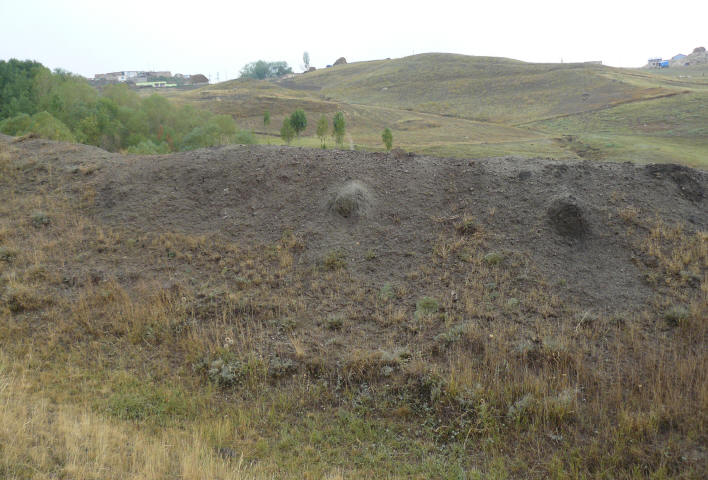
Above: Standing on the ark, we see the western, starboard, inside of the ark,
which
boasts these horizontal deck support posts extending above the matrix
material
in the center and right portions of this photo.
photo Kevin Fisher
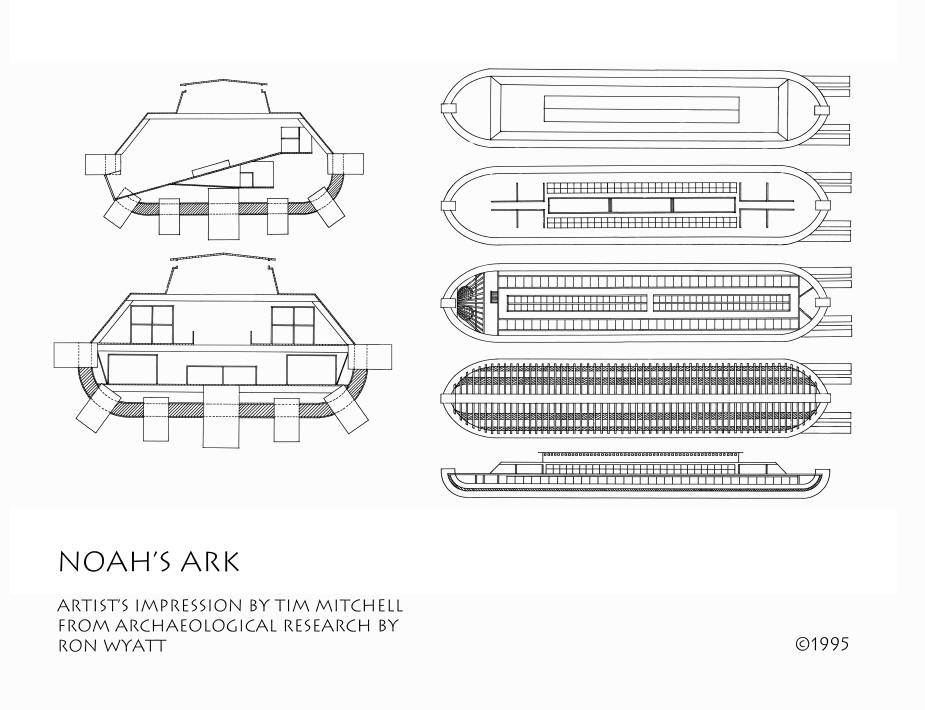
Above: Diagram of the ark based upon radar scans
Convex Symmetrical Deck

Above: The symmetrical shape of the ark
can been seen from the rear, with a center mound
that is the deck area that has collapsed, and the port and starboards side to
the left and right.
A boy can be seen at the rear. photo Kevin
Fisher

The Petrified Wood
This example of the petrified wood shows distinct right angles
and the wood grain of the wood. Specimen found by Ron Wyatt.

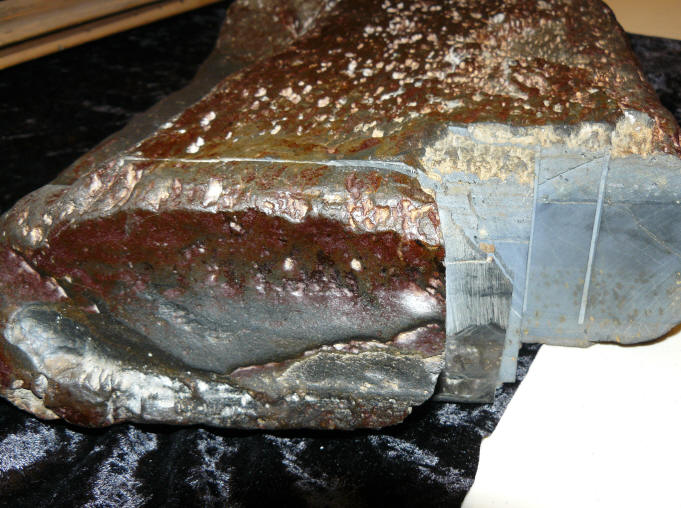
Above: A close-up photo of an 18 inch deck plank unearthed before Turkish officials by Ron Wyatt and features
three distinct layers of wood with glue protruding from the end. It was
tested and proved to be petrified wood. It is 18 inches in length and has
a few visible nails. It is made of three layers of wood with
dark pitch on top. At the bottom right you can see dark spots which may be
consistent with Pecky Cypress wood, so this may be the gopher wood described in the biblical account.
This deck timber was analyzed at Galbraith Labs in Knoxville, Tennessee, and was
found to have a total carbon content of 0.7100%. From this figure you
would deduct the inorganic carbon of 0.0081%, leaving 0.7019% organic carbon,
which is a much higher level of organic carbon than inorganic, so this indicates this was once living matter.
photo Kevin Fisher
Original Location
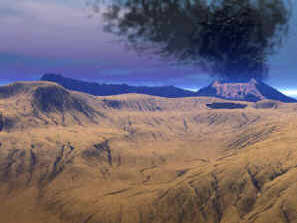
Graphics courtesy Mark Johnson www.arkfind.com
The ark originally came to rest higher on the mountain after
the Flood. At some point in the first two thousand years of resting in
the mountains of Ararat, a volcano erupted above the ark and moved the ark
further down the mountain and then impaled it on a rock outcropping where it
rests today.
The ark rests on Cesnakidag Mountain, which is interpreted as
"Doomsday" Mountain. The Flood would be considered a real "doomsday" since
it destroyed the world. The mountain is made of sedimentary cretaceous
water laid rock, which means it was formed by the Flood waters and is not a post
Flood formation.

Above: This is the alcove, in the center and rear, where the ark came to rest
originally,
higher on the mountain. In the distance straight
ahead is the Iranian guard tower. To the left on
the ridge is the Turkish
guard tower.
If you walk up here there is a good chance you will be
arrested by the Turks, as
has already happened. photo Kevin Fisher
Artifacts found inside the Ark
Core Drill by Ron Wyatt
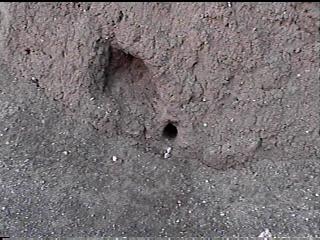

A look inside Noah's Ark!
This is a look through the six inch diameter core drill Ron Wyatt performed
years ago. It leads to a chamber which contained petrified animal dung
coprolite (below),
cat hair, the base of an antler (below), human hair, and man-made fiber that is similar
to fiber optic. Ron closed it up to prevent contamination inside.
photos Kevin Fisher
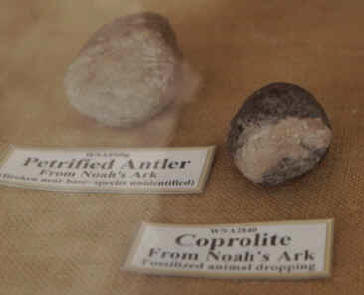
Various Pictures

Crumbling Apart
This photo was taken of the side of the ark. You will find petrified wood and mud matrix material.
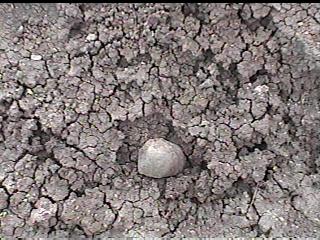
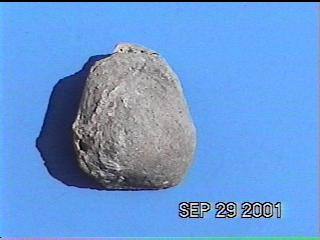
(Left) Perhaps a petrified piece of fruit, or some other object, 3 1/2" diameter, found in the bow of the deck.
(Right) Black seeds? at top of fruit. photos Kevin
Fisher
Google Earth Image of the Ark
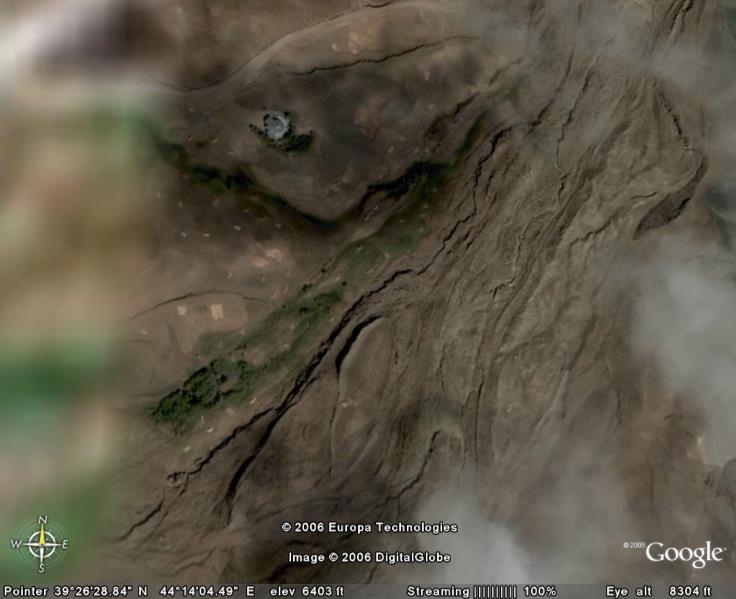
Visitors' Center seen toward top, ark at bottom center.
39 26' 26.09" N and 44 14' 04.29" E

In November 2000, a separate group takes GPS readings to calculate
the length of
the ark
Ostracon or carving on
pottery shard,
depicts man building something,
perhaps Noah.
Found by an archaeologist 60 feet from ark
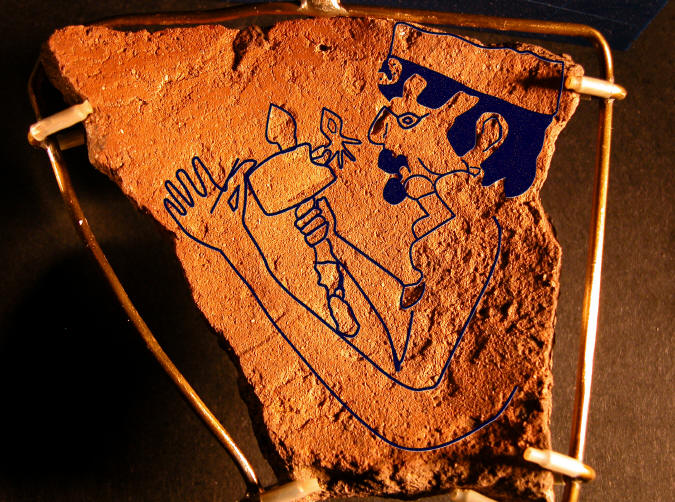
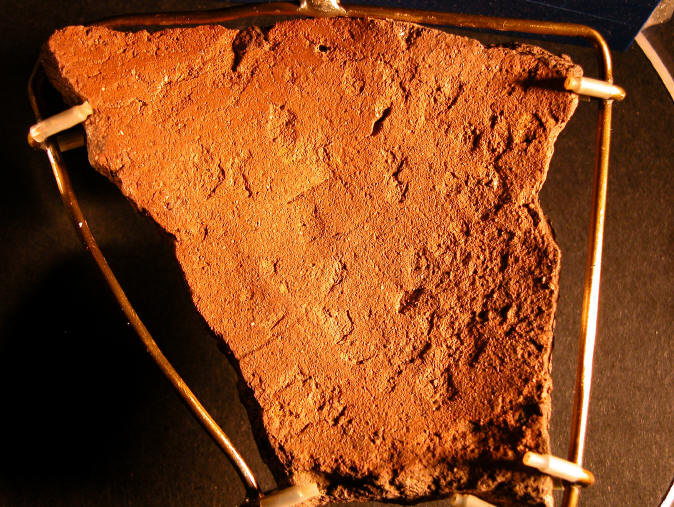
Above: Ostracon image of man hammering
Below: Image of man releasing birds
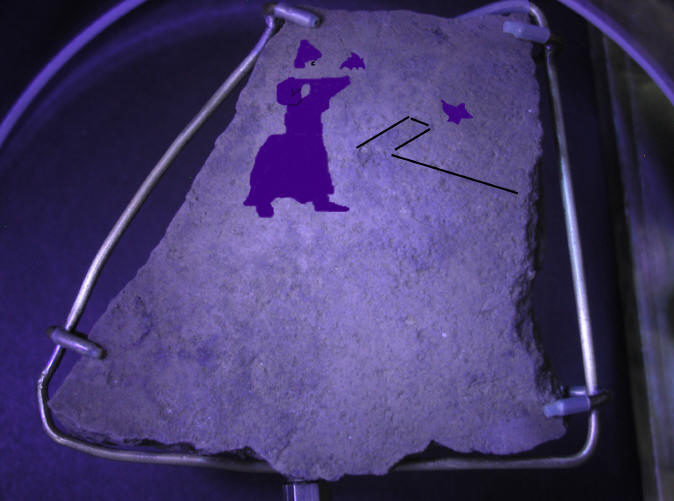

photos Kevin Fisher
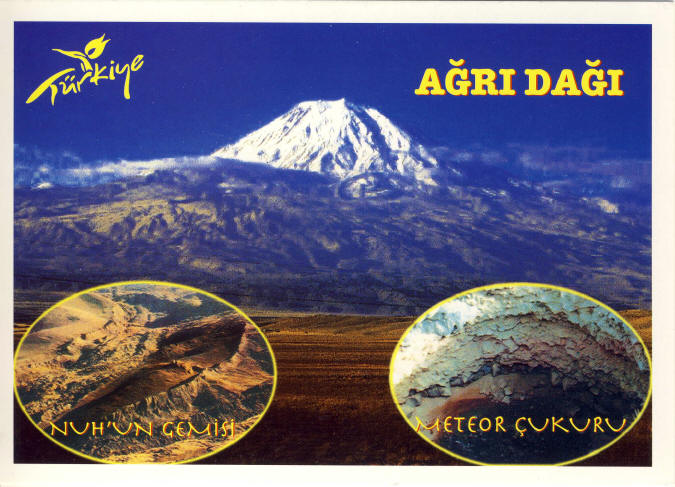
Above: Turkish postcard of the Dogubayazit area,
featuring Noah's big boat, on left.
Visit The Place
of Eight and
the Anchor Stones
What's Next?
An excavation permit to dig into the ark has never been issued
by the Turkish government, preventing thorough documentation of the site.
Partial documentation of this site has periodically appeared on The 700 Club,
20/20, The Discovery Channel, The Learning Channel, CNN, Encounters, and various
local Christian TV stations, but Ron Wyatt never had his own documentary
shown on national television. An excavation would uncover petrified
timbers inside, so we are hopeful a dig can someday take place.
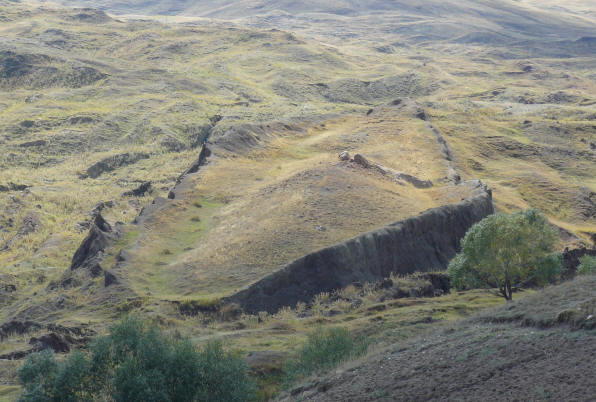
Ark viewed from rear, pointed front in distance
